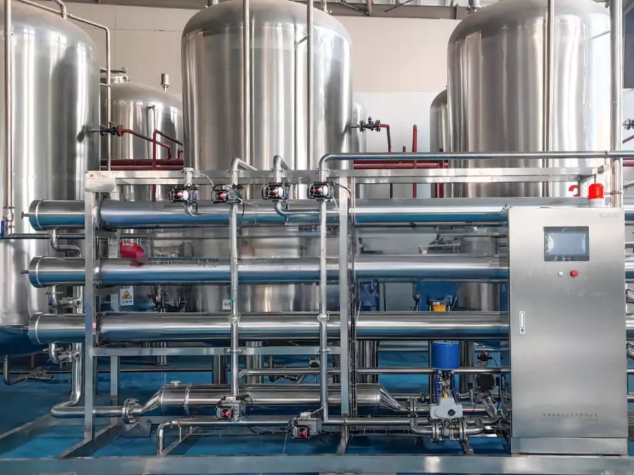Understanding Zero Liquid Discharge in Industrial Applications

As global water scarcity worsens and environmental regulations tighten, industries face mounting pressure to minimize water waste and pollution. Zero Liquid Discharge (ZLD) has emerged as a transformative solution, designed to capture, treat, and reuse nearly all industrial wastewater—leaving no liquid effluent to discharge. This article breaks down ZLD’s core concepts, working mechanisms, industrial applications, and key benefits.
What Is Zero Liquid Discharge (ZLD)?
Zero Liquid Discharge is a water treatment strategy that aims to eliminate liquid waste from industrial processes. Unlike traditional wastewater systems, which release treated (but still potentially harmful) water into rivers or sewers, ZLD systems recover over 95% of used water for reuse. The only byproduct is a solid or semi-solid residue (e.g., concentrated salts), which is safely disposed of or repurposed.
ZLD is not just a “zero discharge” label—it’s a circular approach to water management. By closing the water loop, industries reduce reliance on freshwater sources and avoid violating strict environmental standards (such as the EU’s Industrial Emissions Directive or the U.S. EPA’s Clean Water Act), making it a critical tool for sustainable operations.
How Does a ZLD System Work?
A typical ZLD system combines multiple treatment stages to purify and concentrate wastewater, ensuring minimal liquid loss. The process usually follows three core steps:
1. Pre-Treatment
First, wastewater undergoes pre-treatment to remove large solids, oils, and organic matter. This may include screening (to filter debris), coagulation-flocculation (to clump fine particles), and sedimentation. Pre-treatment protects downstream equipment (like membranes) from clogging, ensuring long-term efficiency.
2. Primary Concentration
Next, the pre-treated water is concentrated to reduce its volume. Common technologies here include reverse osmosis (RO)—which uses semi-permeable membranes to separate water from dissolved salts—and thermal evaporation (heating water to produce vapor, which is then condensed for reuse). These steps shrink the wastewater volume by 80–90%, leaving a concentrated brine.
3. Final Solidification
The remaining brine is further processed to eliminate liquid entirely. Technologies like brine crystallizers (which evaporate remaining water to form solid salts) or spray dryers (which turn brine into a dry powder) convert the concentrate into a solid byproduct. This solid is either recycled (e.g., salts used in other industrial processes) or disposed of in compliance with waste regulations.
Key Industrial Applications of ZLD
ZLD’s versatility makes it essential for industries that generate large volumes of wastewater or operate in water-scarce regions.
1. Power Generation
Coal-fired and natural gas power plants use massive amounts of water for cooling. ZLD systems treat this cooling water, removing contaminants like heavy metals and salts, then reuse it—cutting freshwater intake by up to 70% and avoiding thermal pollution of nearby water bodies.
2. Chemical and Petrochemical Industries
These sectors produce wastewater with high levels of toxic chemicals and dissolved solids. ZLD not only eliminates harmful discharges but also recovers valuable chemicals (e.g., solvents) from wastewater, reducing costs and environmental risk.
3. Mining and Metal Processing
Mining operations generate “acid mine drainage”—acidic water rich in heavy metals (lead, arsenic). ZLD systems treat this water to remove toxins, allowing reuse in mining processes and preventing contamination of groundwater or rivers.
4. Food and Beverage Manufacturing
From breweries to dairy plants, food industries produce organic-rich wastewater. ZLD treats this water to remove sugars, fats, and proteins, then reuses it for cleaning or irrigation—aligning with sustainability goals and reducing operational costs.
Benefits of Adopting ZLD
For industries, ZLD offers both environmental and economic advantages:
- Regulatory Compliance: ZLD ensures compliance with strict discharge limits, avoiding fines and reputational damage.
- Water Conservation: By reusing wastewater, industries reduce dependence on freshwater, a critical benefit in arid regions (e.g., the Middle East or Southwest U.S.).
- Cost Savings: While initial setup costs are high, ZLD lowers long-term expenses by cutting freshwater procurement and wastewater disposal fees. Recovered resources (e.g., salts, chemicals) can also create new revenue streams.
- Environmental Stewardship: ZLD minimizes pollution of water bodies, protecting ecosystems and supporting corporate sustainability goals—key for consumer trust and investor confidence.
In summary, Zero Liquid Discharge is more than a water treatment technology—it’s a strategic investment in industrial sustainability. As water scarcity and regulations intensify, ZLD will remain a cornerstone for industries aiming to balance operational efficiency with environmental responsibility.
Pesquisar
Categorias
- Art
- Causes
- Crafts
- Dance
- Drinks
- Film
- Fitness
- Food
- Jogos
- Gardening
- Health
- Início
- Literature
- Music
- Networking
- Outro
- Party
- Religion
- Shopping
- Sports
- Theater
- Wellness
Leia Mais
Top Tips to Buy FC25 Players: Your Ultimate Guide to Acquiring EA FC Players
Top Tips to Buy FC25 Players: Your Ultimate Guide to Acquiring EA FC Players
In the thrilling...
Guida Definitiva per Comprare Crediti FC26: Acquista Fut Coins Xbox One in Modo Sicuro!
Guida Definitiva per Comprare Crediti FC26: Acquista Fut Coins Xbox One in Modo Sicuro!
Se sei...
3D Laparoscopy Imaging Systems Market Empowering Surgeons with Advanced Imaging Technology
Innovations Revolutionizing Surgical Imaging
The 3D laparoscopy imaging systems...
**Compra Monedas FC 26: La Guía Definitiva para Maximizar tu Experiencia de Juego**
Compra Monedas FC 26: La Guía Definitiva para Maximizar tu Experiencia de Juego
El mundo...
YYgame 全新體驗,遊戲樂趣盡在 game-queen
在現代數位娛樂時代,YYgame 以其獨特的玩法和豐富的內容,迅速成為玩家熱議的焦點。無論你是策略遊戲愛好者還是休閒玩家,YYgame...
© 2025 Scenario.press - libera espressione
 Portuguese
Portuguese


